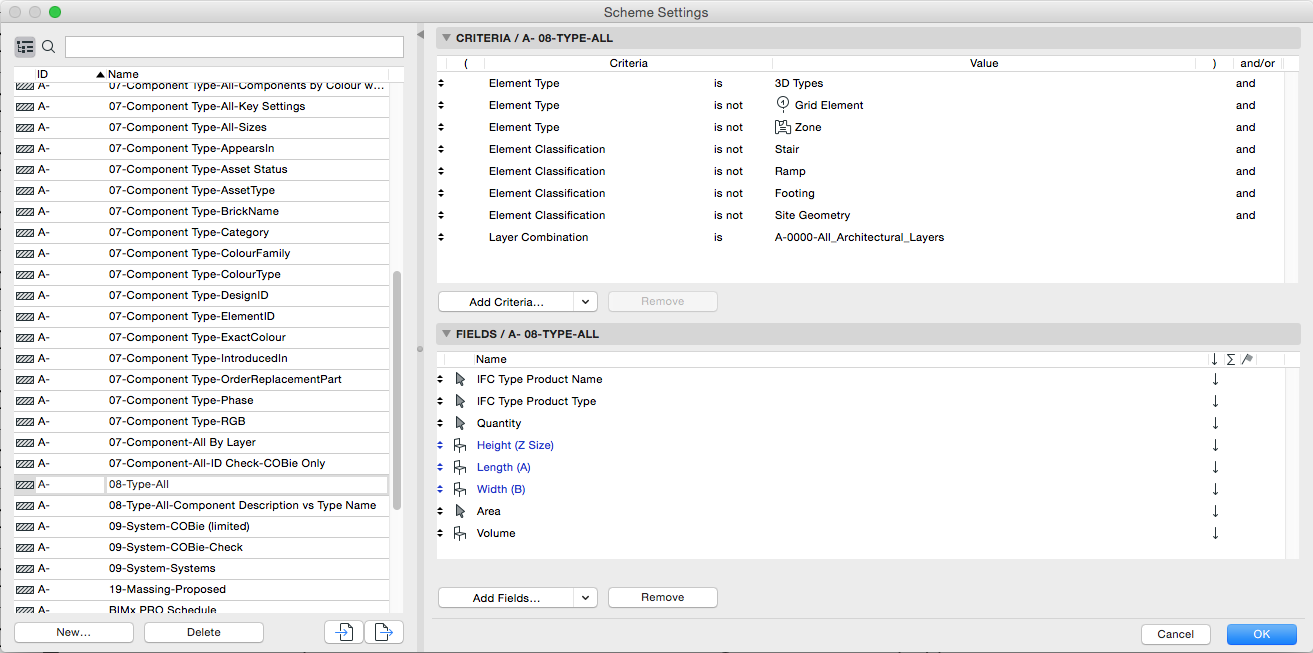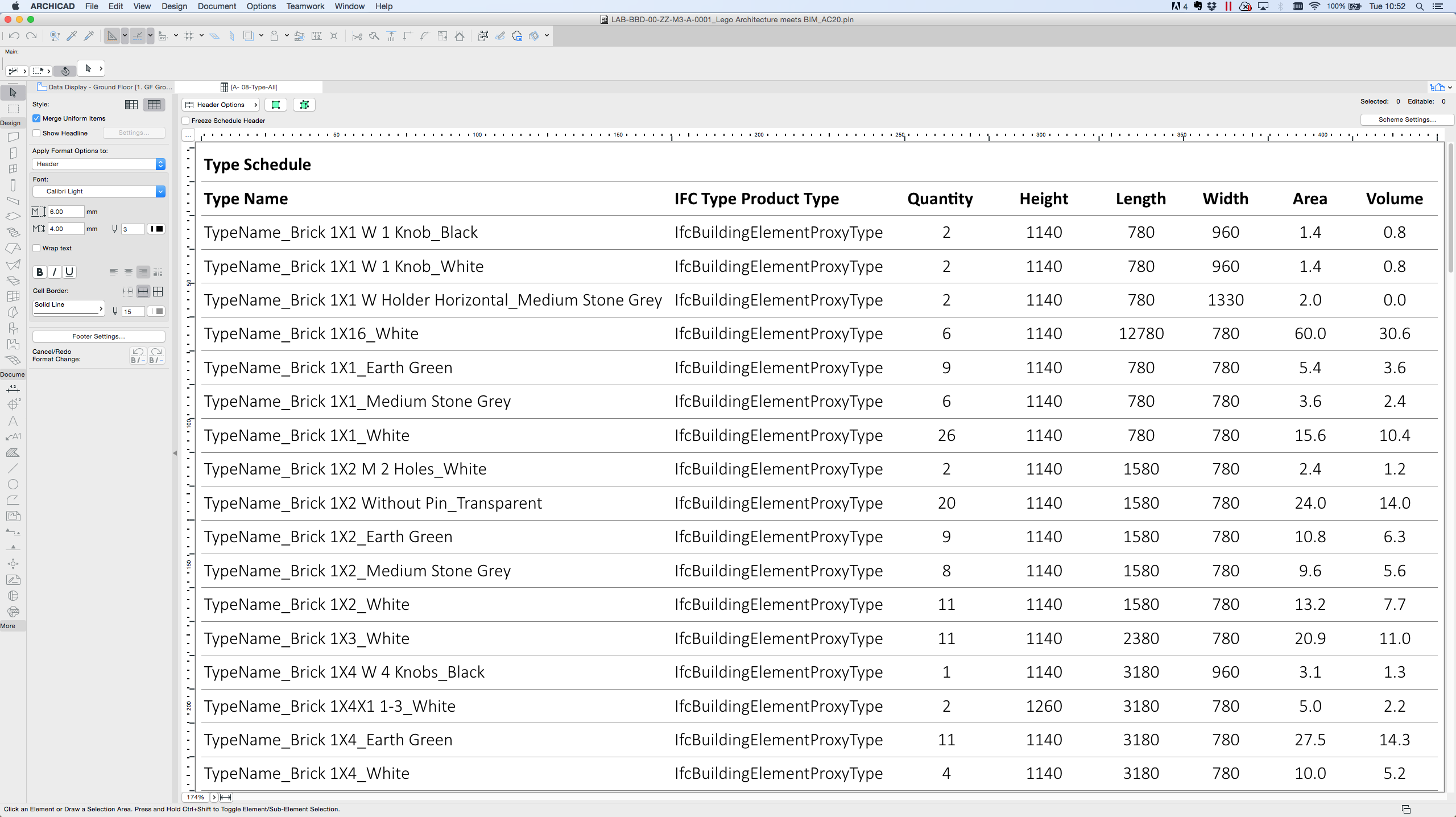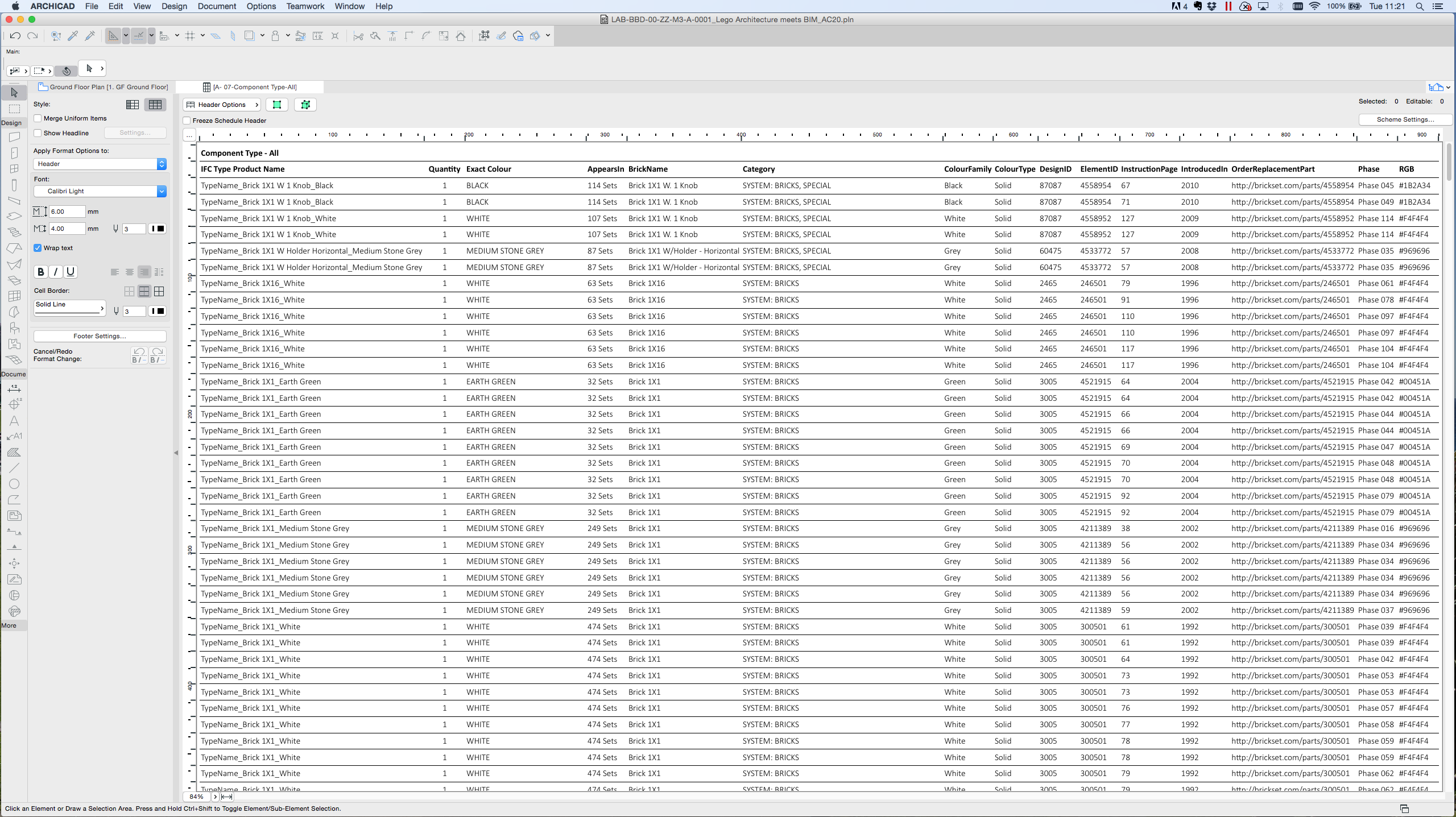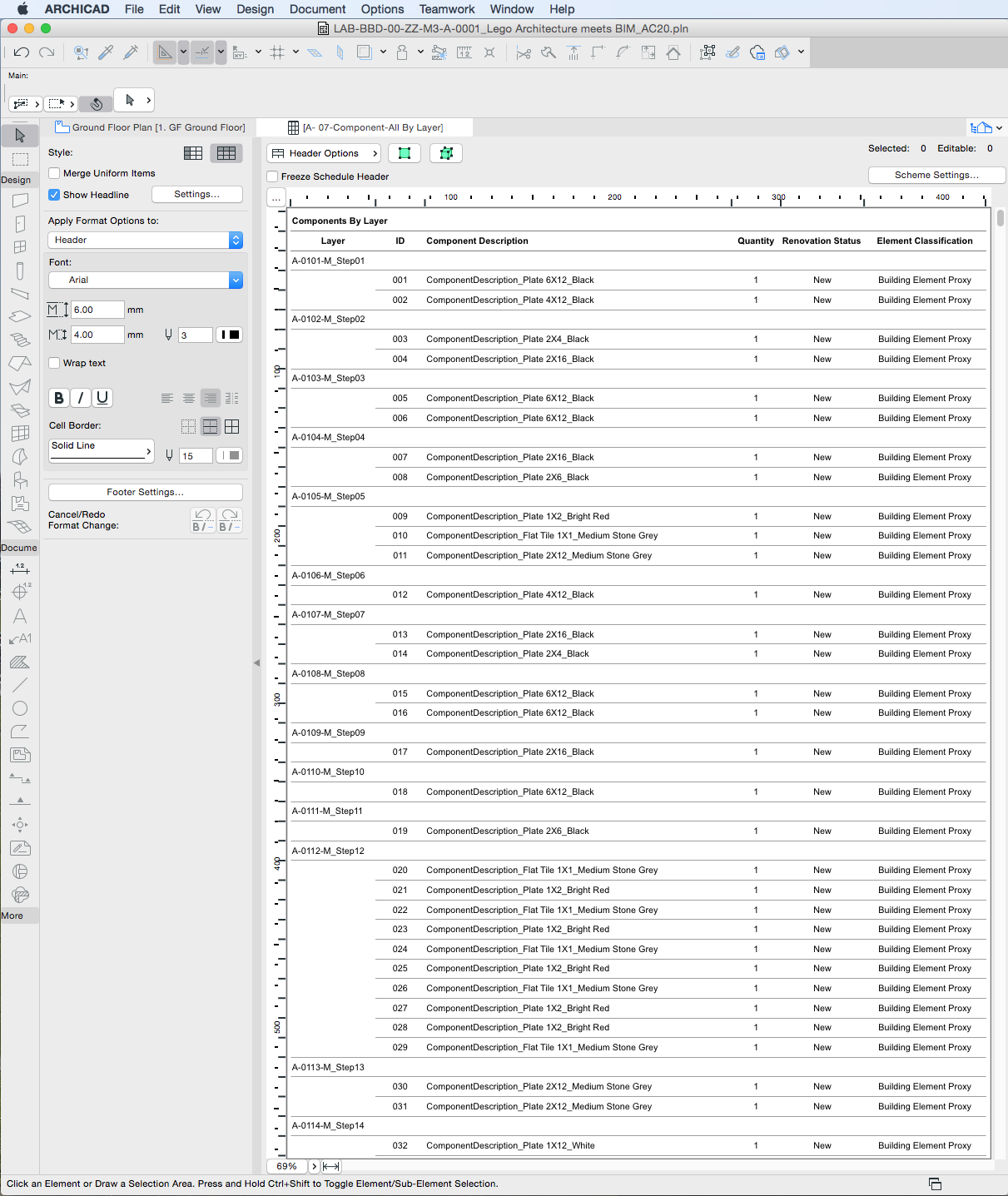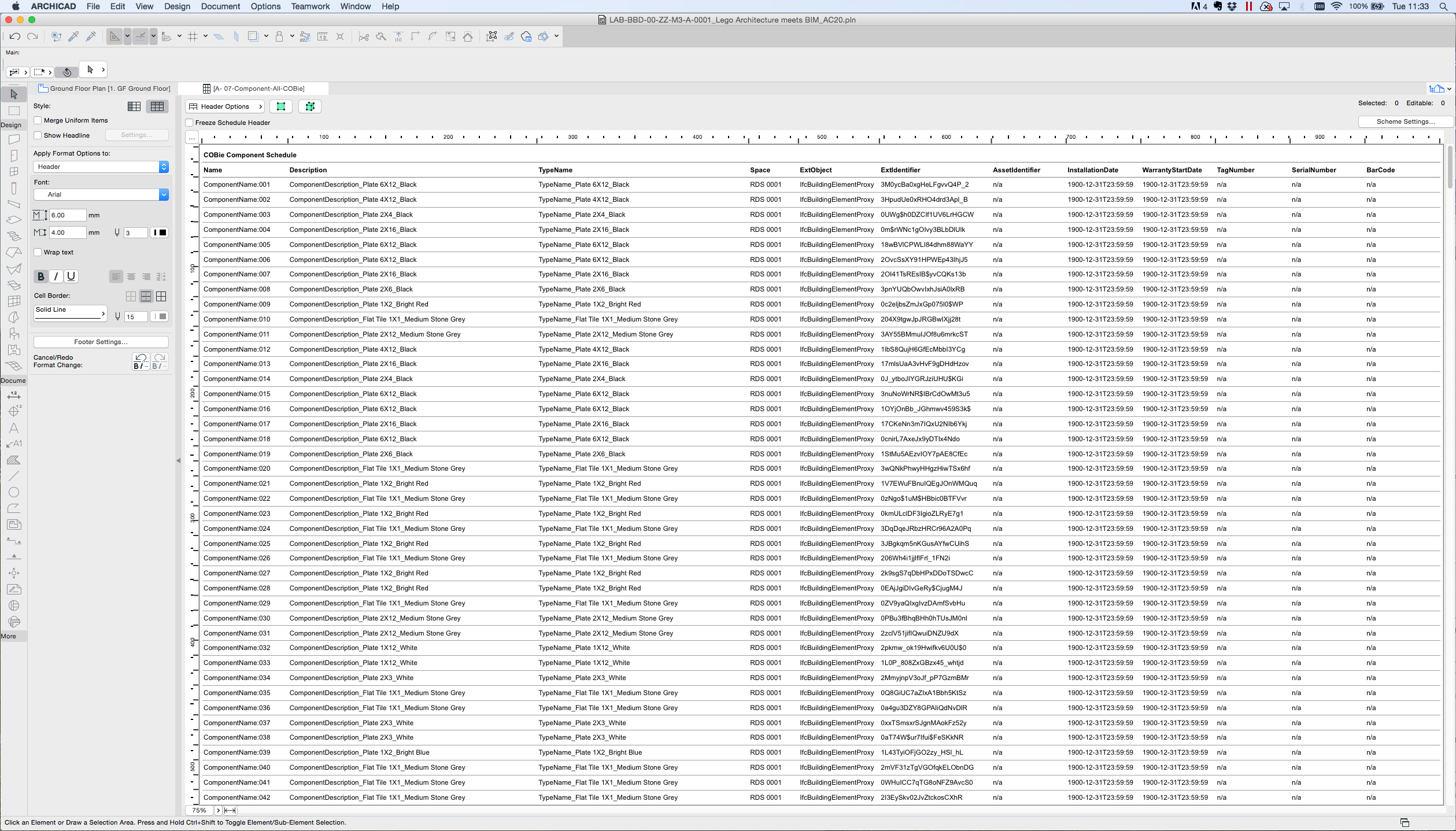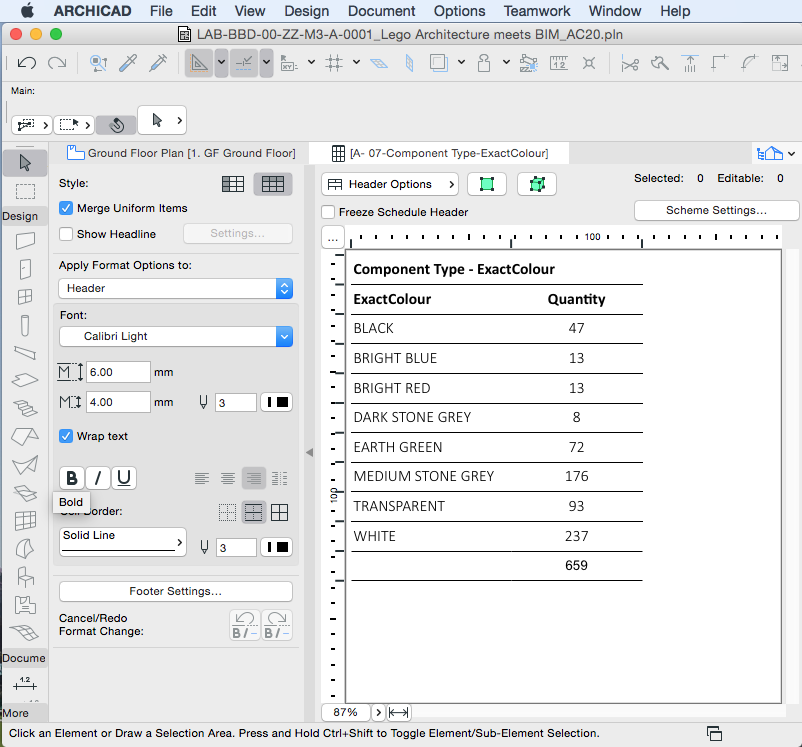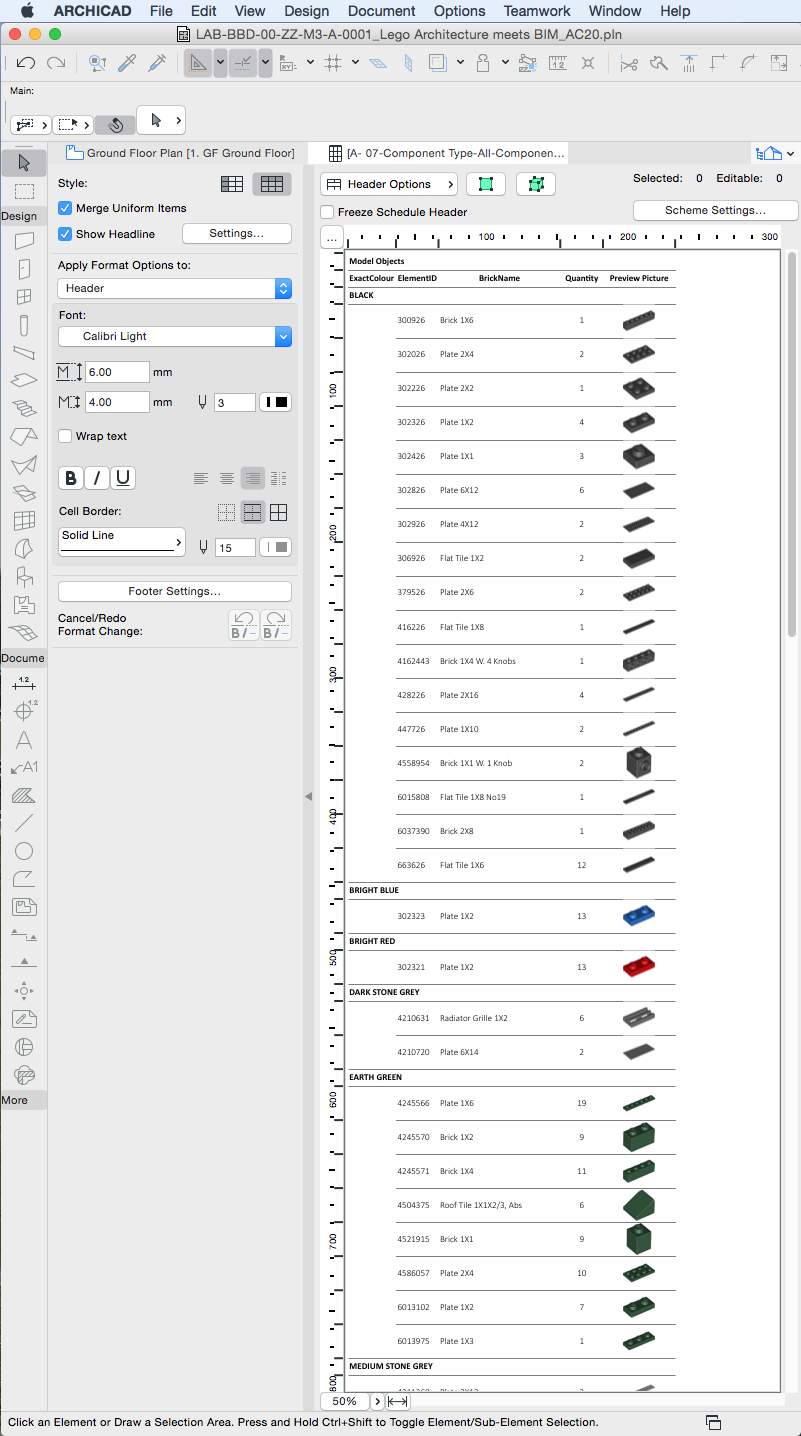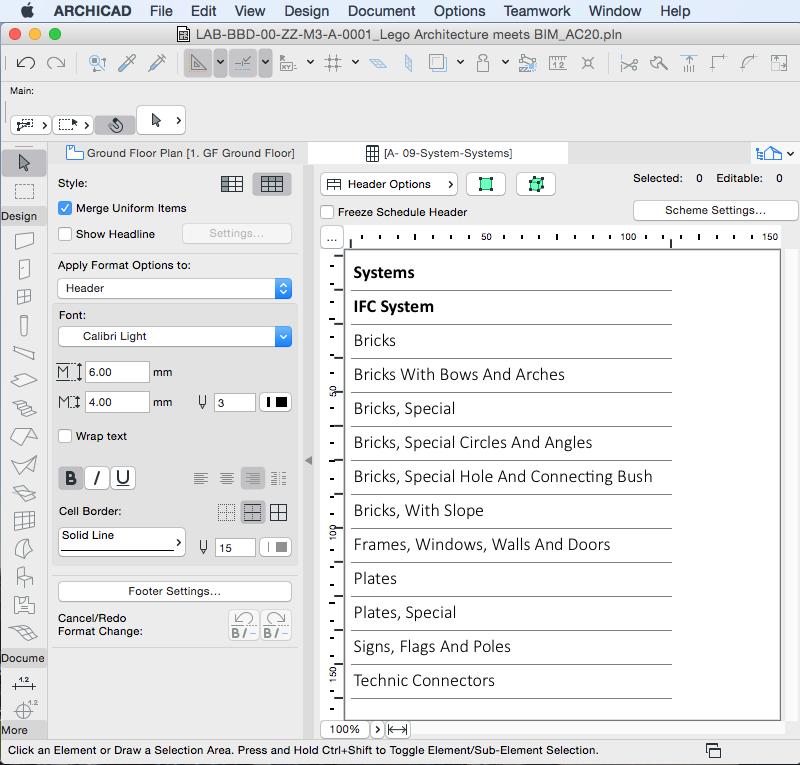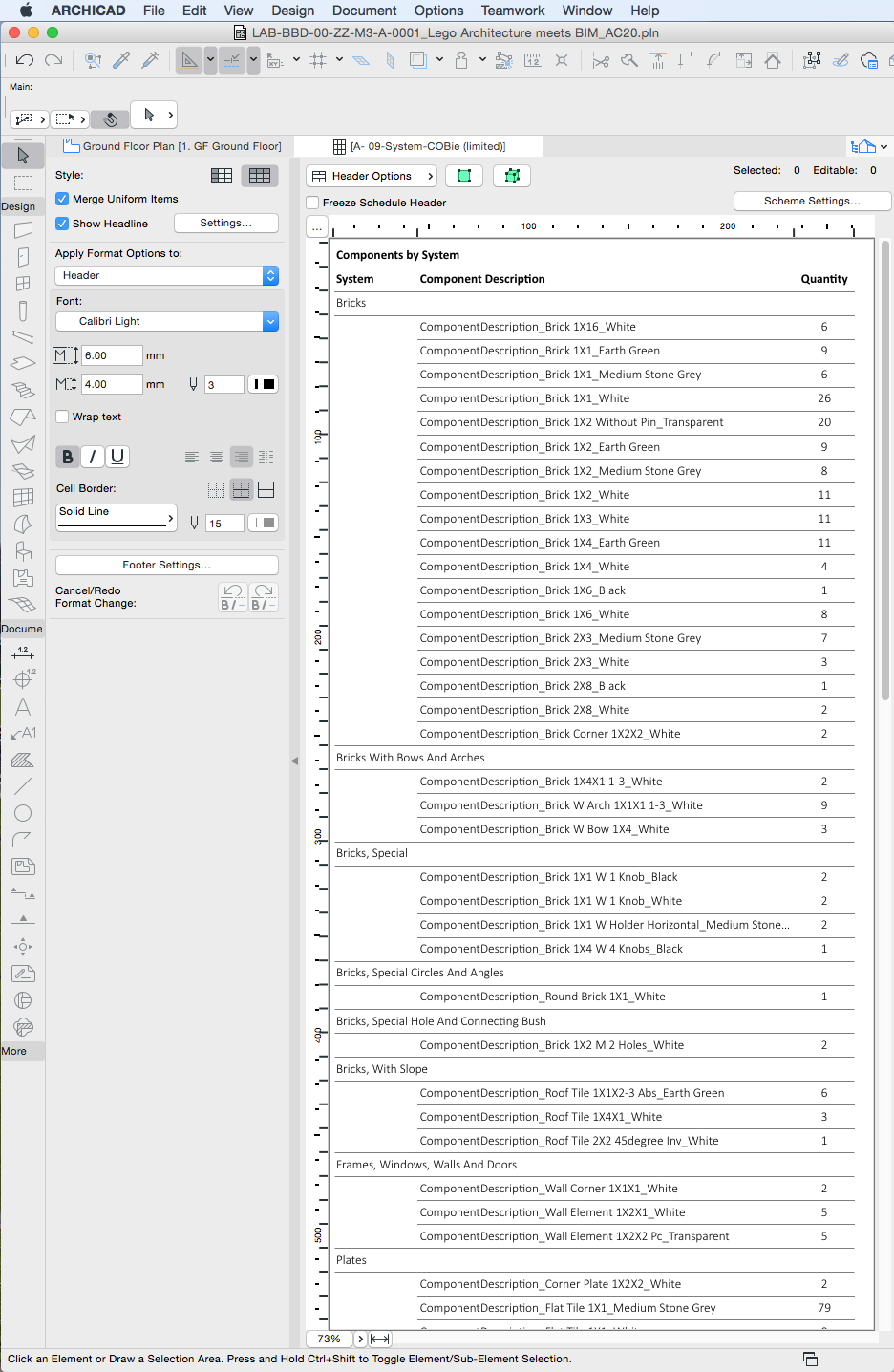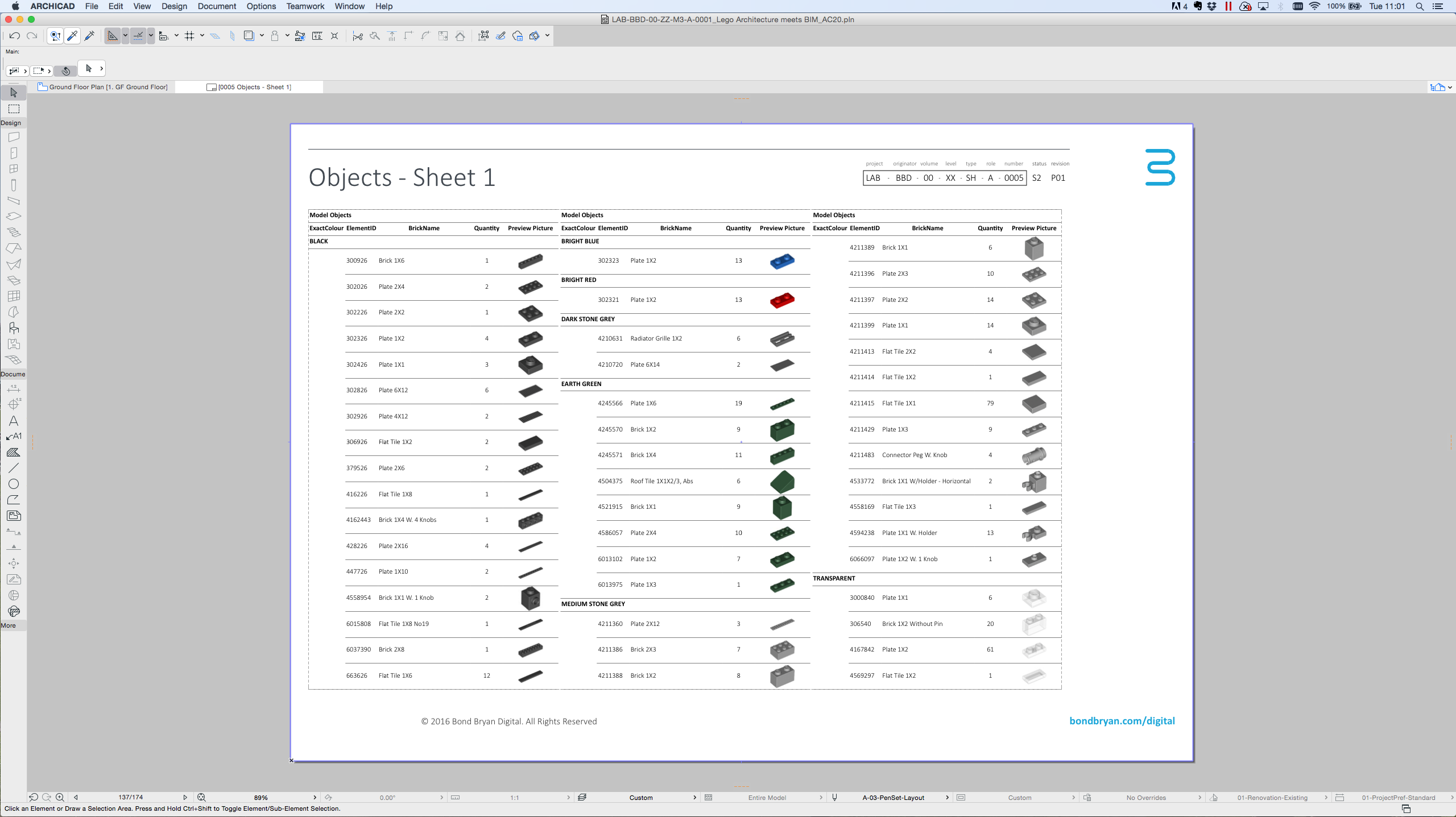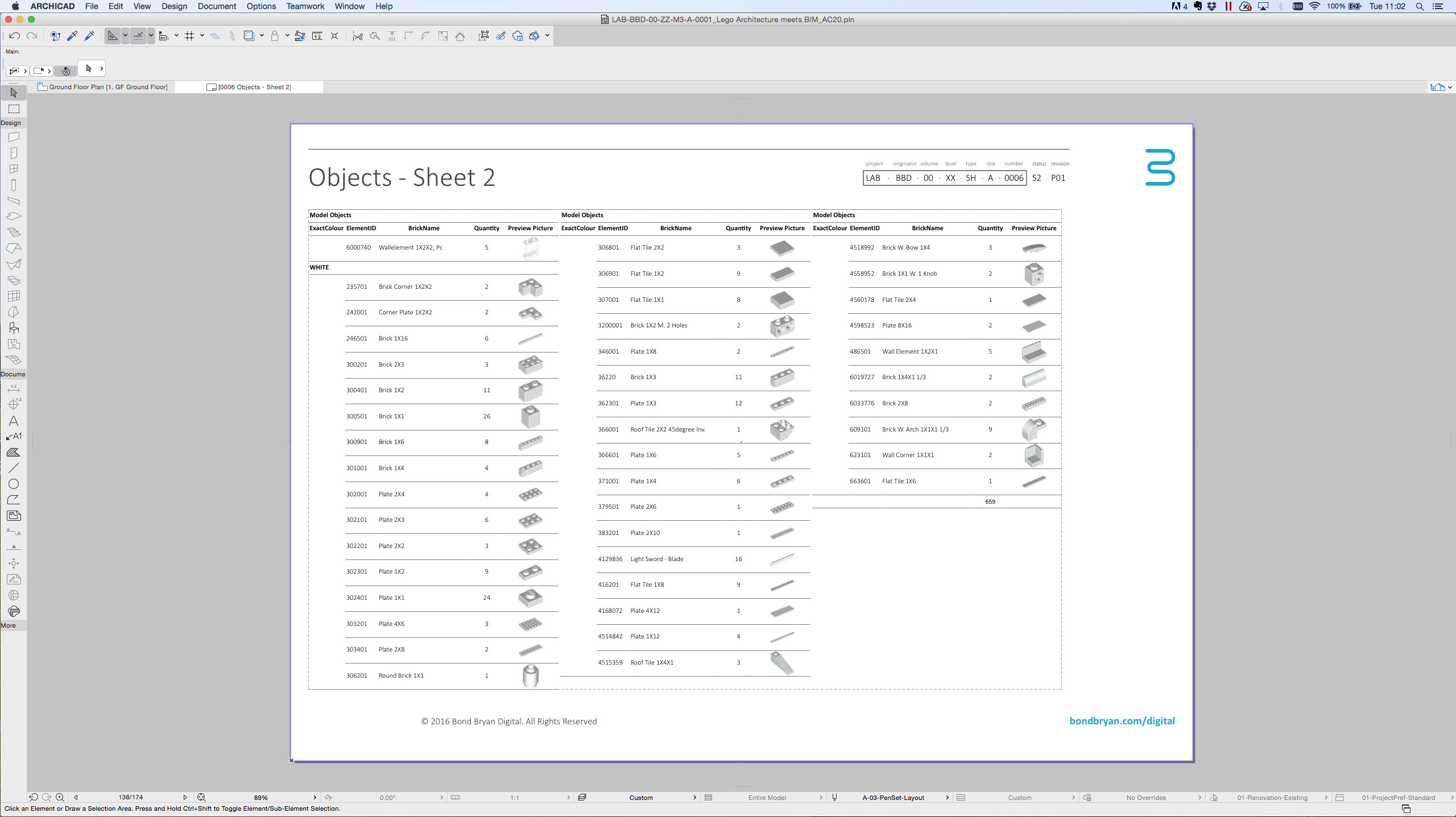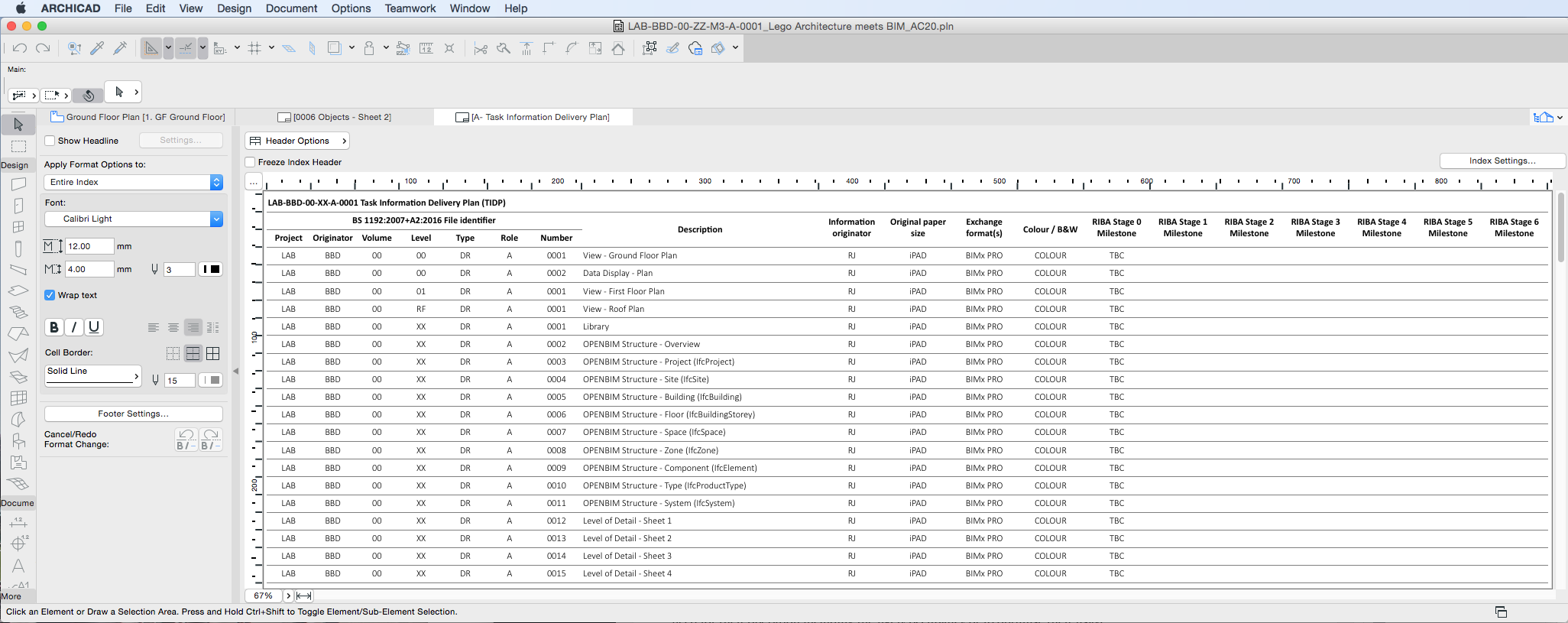LEGO Architecture meets BIM – Part 09: Schedules
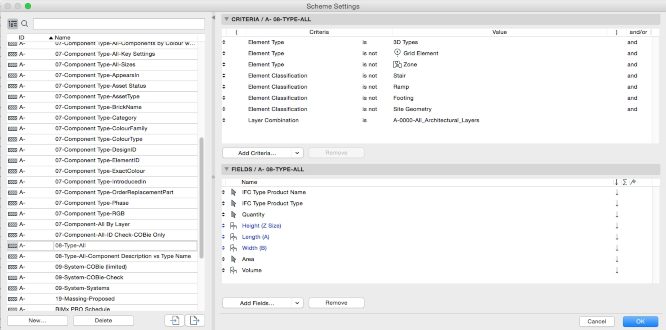
Introduction
As designers we are often required to provide data in a schedule format. This is either provided directly on a layout sheet as a PDF, as an excel output or as a model for schedules to be setup and utilised in external tools. I believe this final workflow will become more and more common place as BIM evolves.
Schedules act as a way to set out data for others to use for their needs but schedules also offer a methodology for model authors to produce and check data. Even where we are only required to provide a model, and not export a schedule, we still need to produce schedules to ensure our models contain the right information.
Schedules provide valuable information to various parties involved in a project. Some examples:
- Clients can have schedules to setout the Spaces within their building allowing them to check it contains all the Spaces they need for their operation including the likely occupancy or to optimise their usage
- Main contractors can use schedules to order products from sub-contractors
- Sub-contactors can use schedules to provide a cost to main contractors to win a tender
- Cost consultants can use schedules to price the quantities that are provided thereby providing a more reliable cost estimate
These are just a few examples of the benefits of schedules. Of course all of this relies on information being reliable and we will look in another post about how reliability can be checked.
Whilst in previous posts we have looked at some of the benefits of 3D modelling, the benefit of the data is far greater to more people in the process.
All of the data extracted in the schedules below is the same data discussed in our previous post entitled LEGO Architecture meets BIM – Part 06: An OPEN BIM data structure.
Schedules
Data from the model can be scheduled with as many or as few columns of data as the creator or recipient requires.
Image: Data from the model can be filtered and selected as required.
Whilst what can be scheduled is almost limitless it is important that the various parties involved in a project clearly setout their data requirements. Setting these requirements out clearly at the beginning of the process will provide better data to its recipients.
We should also not forget that a Schedule is a representation of data in the model and a common mistake by users is simply to switch off schedule fields when they don’t require a data field to be displayed on their schedule output. However users should think differently, the schedule is the connection to ensuring the model is correct and the schedule is merely a way of demonstrating this in a ‘traditional’ output.
Below are some examples of the data that can be scheduled for Spaces and Components.
Note: Theoretically any data in an authored model should be able to be scheduled. However our chosen authoring tool, Graphisoft ARCHICAD can not currently schedule Contact, Project, Site, Building and System data. Also Type, Floor and Zone data is limited in which data can currently be scheduled.
Image: Schedule of LEGO Type data organised by Type Name (partial) shown in GRAPHISOFT ARCHICAD 20.
Image: Schedule of LEGO Component data organised by Design ID (partial) shown in GRAPHISOFT ARCHICAD 20.
Image: Schedule of LEGO Components organised by Layer (partial) shown in GRAPHISOFT ARCHICAD 20.
Image: COBie LEGO Component schedule (excluding CreatedBy, CreatedOn and ExtSystem) (partial) shown in GRAPHISOFT ARCHICAD 20.
Note: Some of the schedule headings above have been amended to match COBie. The exported data however does matches the requirements for IFC export to produce a valid COBie file.
Image: Schedule of LEGO Components by Exact Colour to review number of each colour within model as well as total shown in GRAPHISOFT ARCHICAD 20.
Image: Schedule of LEGO model objects including object images (partial) shown in GRAPHISOFT ARCHICAD 20.
Image: Schedule of Systems shown in GRAPHISOFT ARCHICAD 20.
Image: Schedule of LEGO Components by System (partial) shown in GRAPHISOFT ARCHICAD 20.
Schedules can also be placed directly on layout sheets for issue to others (see below).
Image: Objects – Sheet 1 showing LEGO objects extracted from the model placed on a layout sheet in ARCHICAD 20.
Image: Objects – Sheet 2 showing LEGO objects extracted from the model placed on a layout sheet in ARCHICAD 20.
Schedules don’t have to just schedule things in the model but for example we can also schedule the layout sheets within a model file. In the example below are a list of items forming the basis for a Task Information Delivery Plan (TIDP).
Image: Task Information Delivery Plan (TIDP) schedule (partial) for the LEGO Architecture meets BIM project in ARCHICAD 20.
Conclusion
The key benefit of a BIM approach is that the data on the schedules are linked directly to the elements and other items in the model. So for example, where a dimension is provided in a schedule this will be controlled by the geometry of the model. Equally the geometry in the model can be controlled directly from schedules. This integrated approach reduces the opportunity for error compared to creating schedules with a traditional standalone methodology. Again this just another example demonstrating why a BIM approach is a more far logical approach to previous methods.
Rob Jackson, Associate Director, Bond Bryan Digital
Terms and conditions
All content provided on this blog is for informational purposes only. The owner of this blog makes no representations as to the accuracy or completeness of any information on this site or found by following any link on this site. Bond Bryan will not be liable for any errors or omissions in this information nor for the availability of this information. Bond Bryan will not be liable for any losses, injuries, or damages from the display or use of this information.
We are happy for others to share our blog pieces through all social media platforms. You may include links to the original blog pieces and use part of the blog to then provide a link to the original content. However we would appreciate it if the content is not reproduced in full on other sites or publications without written consent being granted by Bond Bryan.
This policy is subject to change at any time.
LEGO and the Lego logo are trademarks of the LEGO Group. Any trademarks, service marks, product names, corporate names or named features are assumed to be the property of their respective owners, and are used only for reference, without intent to infringe.
